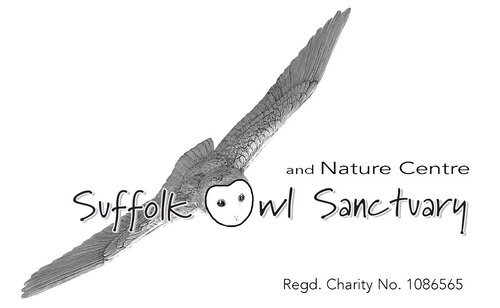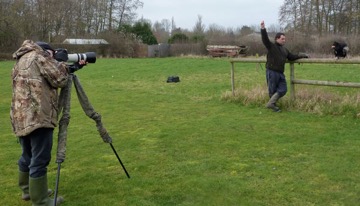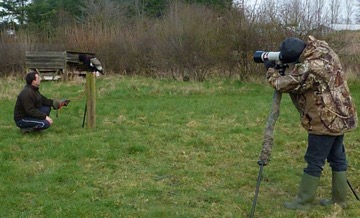We are of course predominantly an owl sanctuary and a bird of prey centre, but (as I may possibly have mentioned before) we are passionate about all animal conservation. You may have read about our Red Squirrel project and we are also home to chipmunks and ferrets and have a bird hide looking out on a feeding area for native hedgerow birds.
Conservation is a complex subject and the work we do rehabilitating injured wild birds is, albeit vitally important, only part of the picture. In general, birds of prey are always close to, if not at the top of, the food chain. All living things need food to give them the energy to grow and move and a food chain shows the progression from one source of food to the next. All food chains begin with a green plant (called a ‘producer’), which is then eaten by an animal (called a ‘consumer’). An example of a food chain might be: grass which is eaten by a grasshopper, which in turn is eaten by a toad, which is then consumed by a snake, which is finally devoured by a hawk.
Barn Owls are amongst those who rely upon healthy field margins to supply an environment which enables small prey species like mice and voles to flourish
If there are problems with the consumer at the top of a food chain, it can be an indication that there is something going wrong further down the line. This of course, is what happened to our native British Barn Owl locally a few years ago. In fact they really suffered from a double whammy. Not only were many of the farm buildings that provide perfect nesting sites pulled down or converted, but there was a time when farmers were farming right up to the edges of fields and not leaving the grass margins where Barn Owl prey would ideally live. This upset to the prey’s habitat had a knock-on effect on the Barn Owl population, which at one time was seriously depleted. Thankfully, numerous nest box schemes (including our own, which is funded by your contributions) and the re-instatement of grass margins in many areas has meant our Barn Owls are now doing better, but clearly the fall in their population at that time told us that there were problems much further down the food chain and/or with the eco-system they lived in. For more about grass margins, visit, click here.
Domestic animals are less likely to be directly affected by problems with an eco-system, but none-the-less learning about the care and welfare of a pet can be a marvellous way of introducing children to the concept of conservation in the wider sense. All animals need the right food to be healthy, a plentiful supply of fresh water and a suitable habitat, whether they live in a wood or in an enclosure in your living room.
Hoping not to become part of anyone's food chain, Sandy the Guinea Pig will help us explain the role of small mammals to young visitors learning more about the process of life in the wild
Which brings me – in a rather roundabout way – to the point of this blog, which is to say welcome to our two new kids on the block. Not, as you might imagine, residents of the feathered variety, but two guinea pigs called Coco and Sandy, donated to us by Chris, one of our work experience youngsters. Andy has already been hard at work building them an outside run so that they can enjoy some fresh air and sunshine on clement days and they are settling in well. We hope the guinea pigs will become part of our ever-expanding education programme, helping us to teach children about the importance of caring for all animals both domesticated and wild.


























































